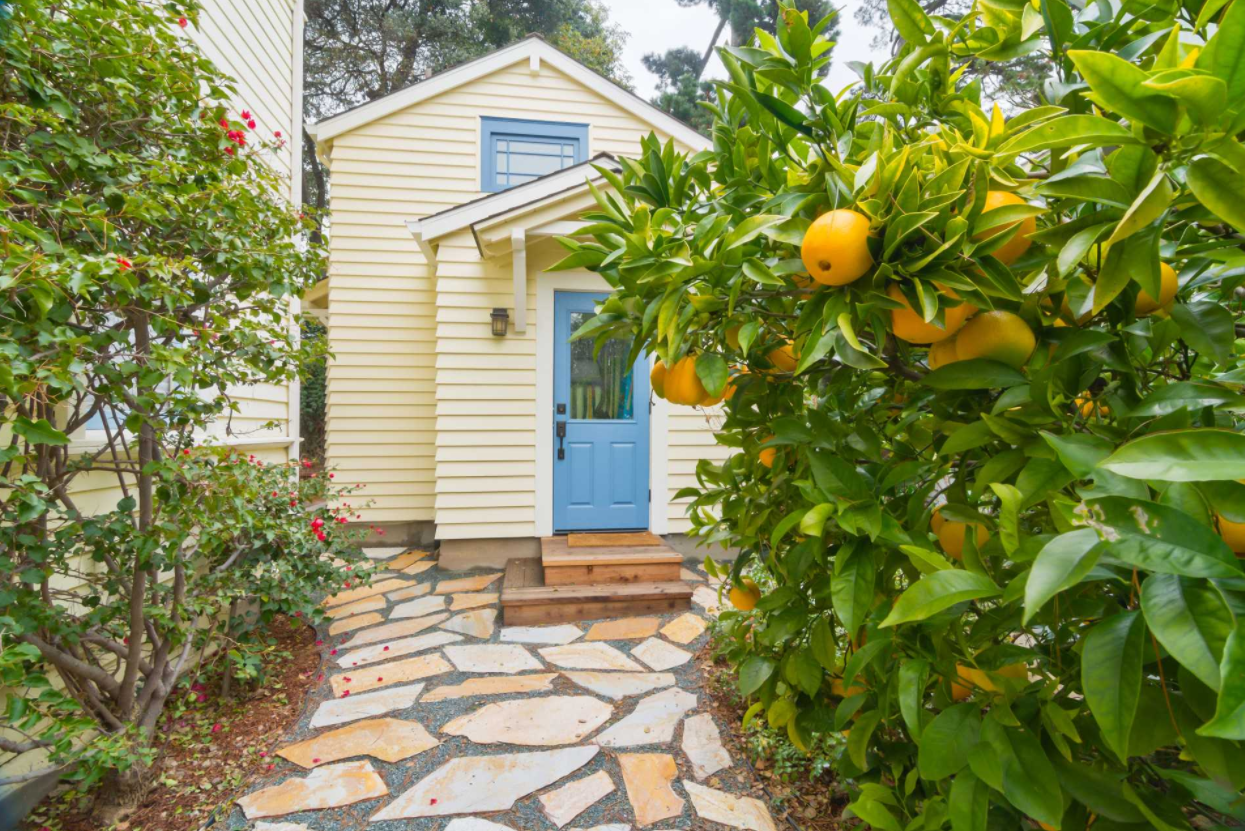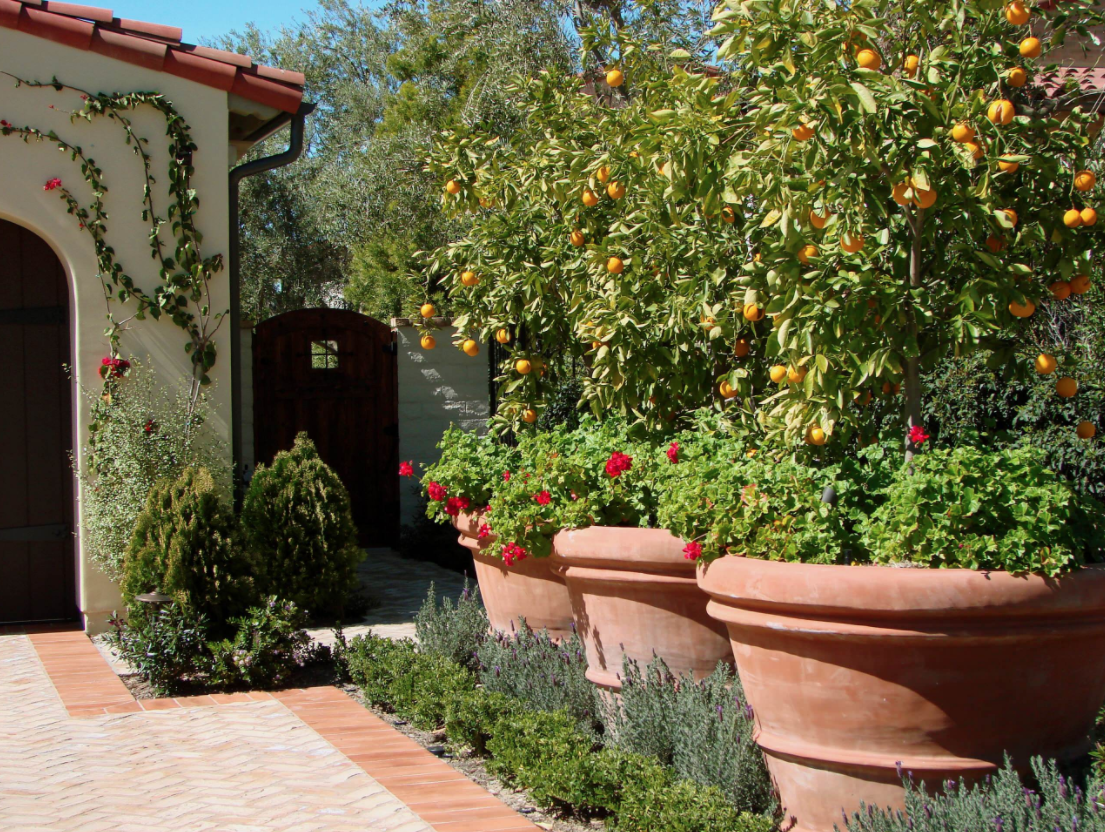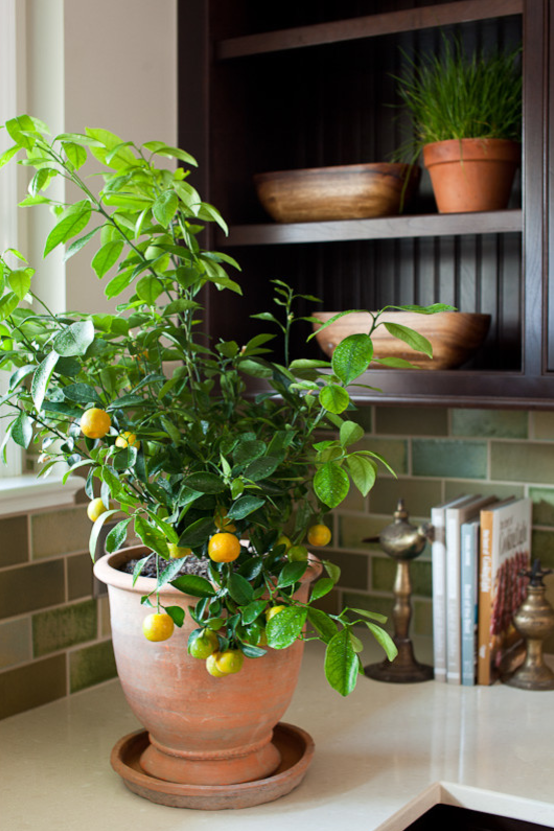Get Ready for Spring! Tips for Growing a Lemon Tree

You might think that growing lemon trees is the preserve of expert gardeners in exotic climes, but it isn’t all that difficult, especially if you know what you’re doing and take care of the tree’s basic needs at the very least.
 Photo: AMS Landscape Design Studios, Inc.
Photo: AMS Landscape Design Studios, Inc.
Lemon Tree Propagation
Many lemon trees are bought as seedlings in pots straight from the garden center, but they can be grown from seeds and cuttings as well. The variety of lemon tends to dictate which method works best – Meyer lemon trees work well from cuttings and bear fruit in as little as two years. Trees grown from seeds don’t bear fruit for at least four years, usually seven.
Most people prefer to grow lemon trees from cuttings as it’s easier, but growing from seeds is also easy when you know how. If you decide to grow a lemon tree from a seed, you need to let the seeds dry out for a couple of weeks, then plant them an inch deep in good quality potting soil and cover the pot in plastic wrap. Place the pot in a sunny spot and once the plant reaches at least six inches in height, transplant it to a bigger pot.
Remember, though, you’ll be waiting a while for those juicy lemons…
Growing an Outdoor Lemon Tree
Lemon trees make a immediate impact on your garden and are a beautiful way to decorate an outdoor space like a patio or deck. Keep in mind though, lemon trees are more sensitive to the cold than other citrus trees and so they should be planted on, or near to, the south side of your house. They also need a lot of protection from frost, so proximity to your home should provide this.
 Photo: New Avenue, San Francisco
Photo: New Avenue, San Francisco
These trees also need a lot of full sunlight in order to grow properly and while they can grow in a wide range of soils, they prefer slightly acidic, well-draining soil. This means they should be planted slightly higher up in the garden – dig a hole that’s shallower than the height of the root-ball for best results. Once the tree is in the hole, replace the soil and tamp it down. Water the tree well after planting and add mulch to maintain the moisture. You should water the tree deeply once a week and make sure you prune it as it grows. You can learn more about tree pruning here if you are unsure where to start.
Growing an Indoor lemon Tree
Lemon trees grow quite well indoors and they thrive in containers as long as there’s enough room to grow and enough drainage. You can expect your tree to reach a height of between three and five feet.
 Photo: Lauren Liess Interiors
Photo: Lauren Liess Interiors
Indoor trees also need slightly acidic, well-draining soil, so treat this soil as you would outside soil and fertilize it regularly. You can repurpose your outdoor leaves or coffee grounds as fertilizer or purchase store bought liquid fertilizer that is made specially for citrus trees. These trees do best in a temperature range of 70F in the daytime and 55F at night; they will become dormant if their temperature regularly goes below 55F, though.
Indoor lemon trees need as much light as outdoor ones, so you’ll need to give them some fluorescent lighting in winter. If necessary, you can put the tree, in its container, outside in summer to help it along. This is also really useful in helping the tree develop fruit as bees and other pollinating insects can visit it. You can pollinate the tree yourself if you really need to, but sometimes it’s best to let nature take its course.







Leave a Comment